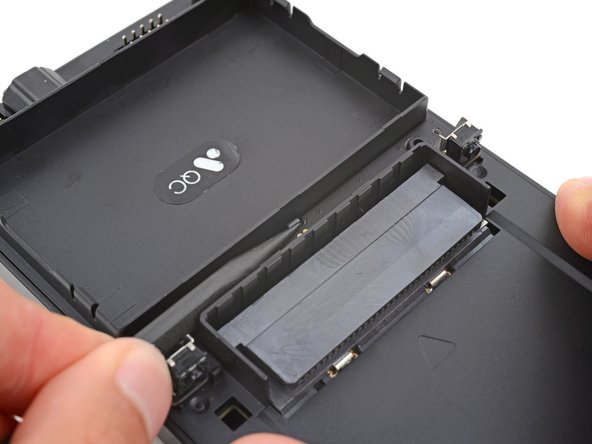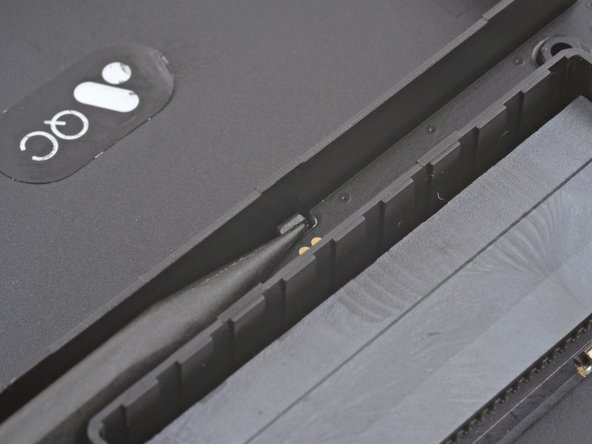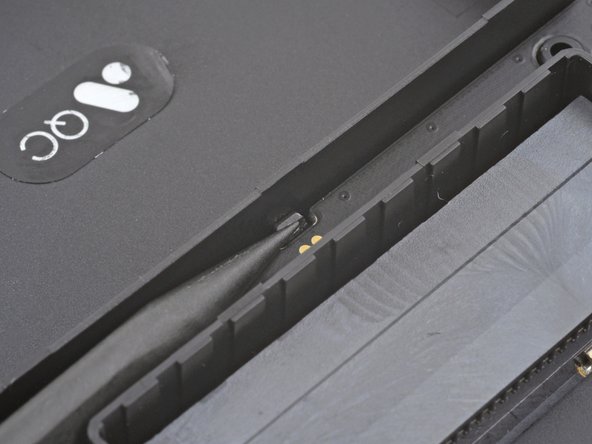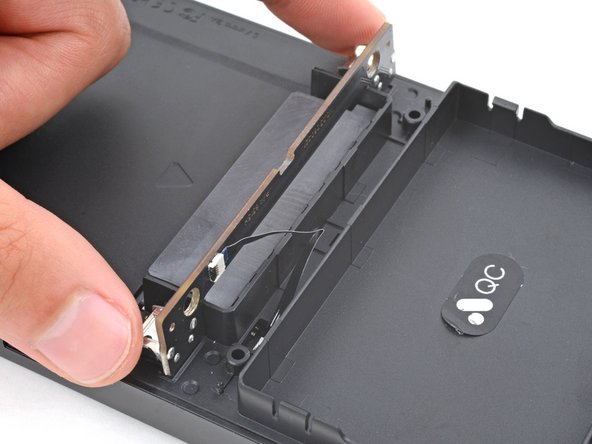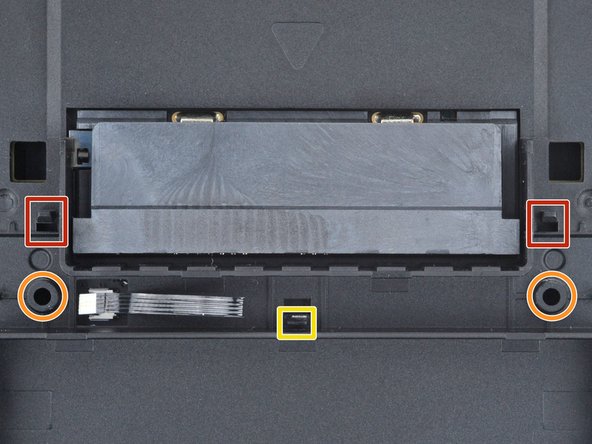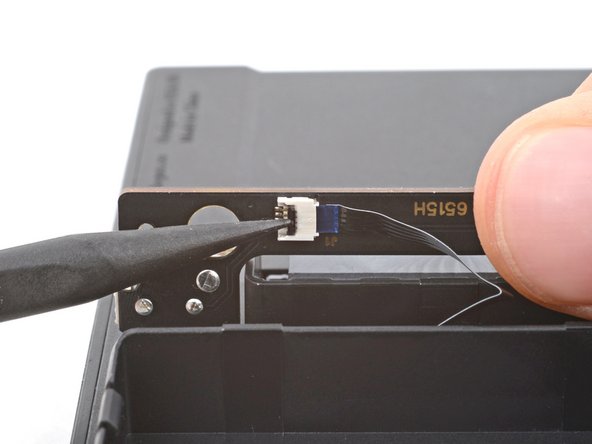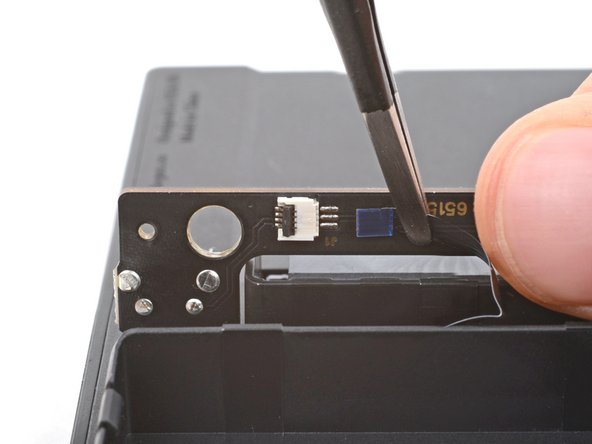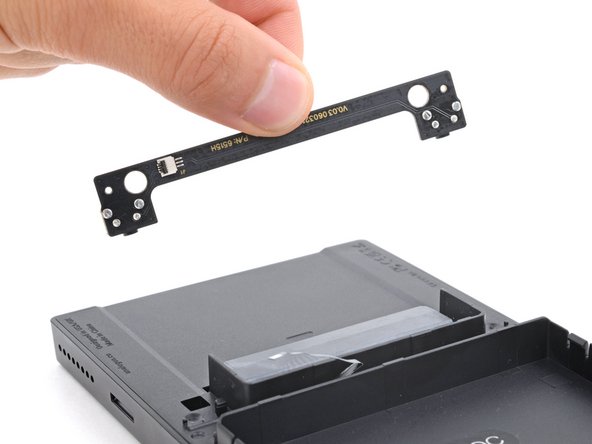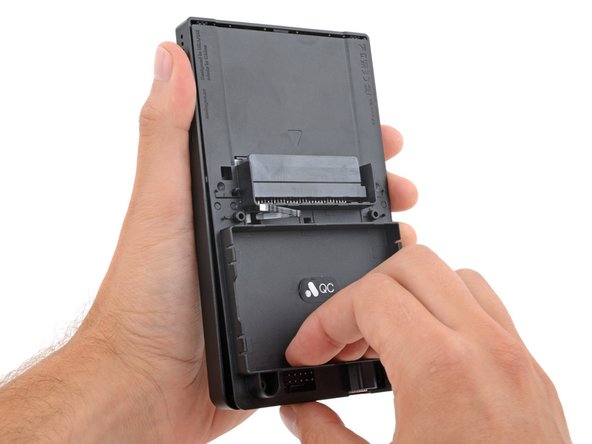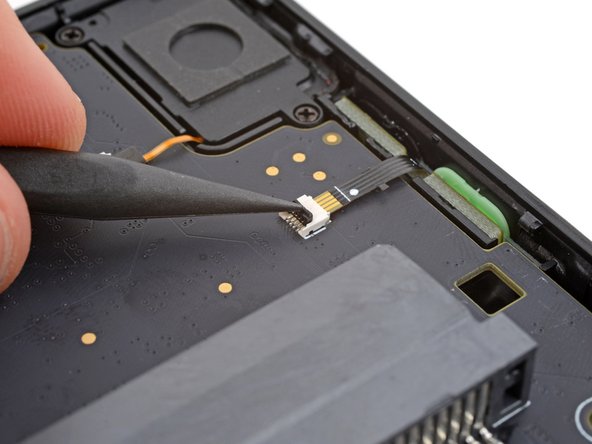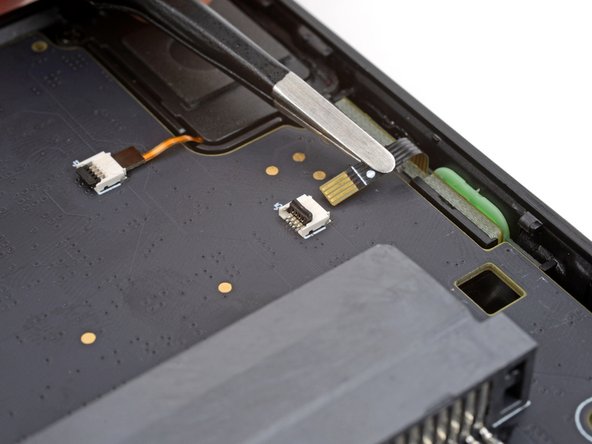Introduction
Use this guide to replace the power and volume buttons in your Analogue Pocket.
Note: The power and volume buttons are attached by a thin piece of plastic and must be replaced as one piece.
What you need
-
-
Unplug all cables and fully power off your device.
-
Working on your device requires laying it screen-side down. To prevent damage, lay it on a soft surface such as a towel.
-
-
-
Use a T6 Torx screwdriver to remove the four 13.4 mm‑long screws securing the battery shell.
-
-
-
Lift the bottom edge of the battery shell to unhook its tabs.
-
Remove the battery shell.
-
-
-
Use blunt nose tweezers to pull the battery connector out of its socket on the bottom right corner of your device.
-
-
-
Lift one of the battery's short edges until the clips release.
-
Remove the battery.
-
-
-
-
Use the point of a spudger to push the clip out and release the board.
-
-
-
Swing the bottom edge of the button board up and over the cartridge reader.
-
Set the board on top of the cartridge reader so the cable's connector is facing the bottom of the device.
-
Put the top edges of the board under their tabs on the rear shell.
-
Lay the board onto the rear shell so the alignment posts go into their circular cutouts on the board.
-
Press the board down until the plastic clip engages.
-
-
-
Use the tip of a spudger or a clean fingernail to flip up the hinged locking flap on the board cable ZIF connector located on the board itself.
-
Use blunt nose tweezers to pull the cable straight out of its socket.
-
-
-
Firmly grip your device with one hand.
-
With your free hand, lift the bottom edge of the rear shell until it clears the front shell.
-
Pull the rear shell down until the sliding tabs disengage.
-
-
-
Remove the rear shell.
-
Thread the button board cable through its slot in the rear shell.
-
Lay the rear shell on the front shell so its bottom edge slightly overhangs.
-
Push the rear shell in and slide it up to engage the sliding tabs.
-
-
-
Use the tip of a spudger or a clean fingernail to flip up the hinged locking flap on the power and volume button cable ZIF connector.
-
Use blunt nose tweezers to pull the cable straight out of its socket.
-
-
-
Insert the point of a spudger between the motherboard and the left side of the button board.
-
Use the point of a spudger to push the button board out to separate the adhesive securing it.
-
Grip the board itself with blunt nose tweezers and remove it.
-
If you're reusing your board, the leftover adhesive should be sticky enough to adequately secure it.
-
If your new board comes with pre-installed adhesive, remove any linings and use a spudger to press the board into place.
-
If your board doesn't have adhesive or the leftover adhesive isn't sticky enough, use strips of thin double-sided tape such as Tesa Tape to secure it.
-
-
-
Use the point of a spudger to push in the power and volume buttons out of their recesses.
-
Use the point of a spudger to lift one of the buttons until you can grip it with a pair of tweezers.
-
Remove the buttons.
-
To reassemble your device, follow these instructions in reverse order.
Take your e-waste to an R2 or e-Stewards certified recycler.
Repair didn’t go as planned? Try some basic troubleshooting, or ask our Answers community for help.
To reassemble your device, follow these instructions in reverse order.
Take your e-waste to an R2 or e-Stewards certified recycler.
Repair didn’t go as planned? Try some basic troubleshooting, or ask our Answers community for help.















